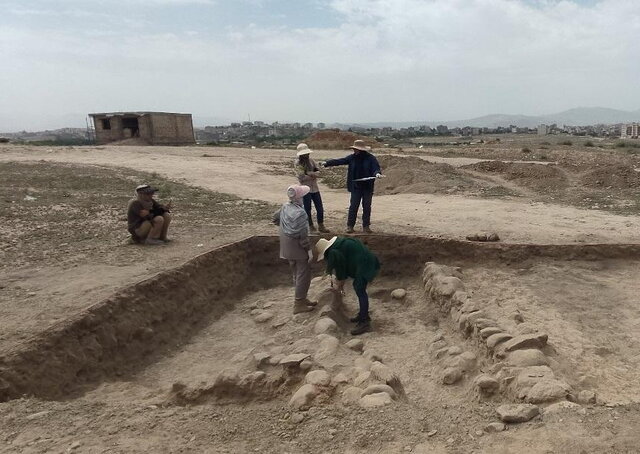4,500-year old ruins and cemetery found in northeast Iran

TEHRAN – Archaeologists in northeast Iran have found archaeological ruins and remnants of an ancient cemetery, estimated to date some 4,500 years.
During their excavations conducted on the site of Kalat-e Yavor in North Khorasan province, archaeologists have found evidence of architecture and a cemetery, which dates back to some 4,500 years ago, ISNA reported on Thursday.
Supervised by the Research Institute of Cultural Heritage & Tourism, the archaeological excavation revealed brief evidence of architecture and extensive burial structures related to the third millennium BC in an area of over seven hectares, the report added.
Situated on the southeastern edge of the Bojnord plain, Kalat-e Yavor is a Bronze Age site where there are signs of settlement since the third millennium BC, archaeologist Kourosh Mohammadkhani said.
The evidence obtained from the archeo-geophysical investigations by the magnetometry method in this ancient place shows the extent and high capacity of this ancient place for conducting archaeological studies, the archaeologist added.
The Bronze and Iron Age is one of the most significant and complicated cultural periods in Iran, which can be attributed to various episodes of migration, the rise of the earliest states, the discovery of new metals and the significantly changed interactions. The respective locations are characterized primarily by grey/black ware, cast vessels, absence or lack of painted ware, extracurricular cemeteries, and the occurrence of iron artifacts.
The technological advancements in pottery, tools, and metal objects as well as the emergence of monumental architectural plans during the late Bronze and early Iron periods are the most obvious examples of the dramatic changes in ancient societies.
Other notable adjustments to burial practices were made on the Iranian plateau and in most of Western Asia as the advent of urbanism permanently ended the long-standing custom of intramural burial and replaced it with the interment of the dead in distinct extramural cemeteries, which were typically located outside of the populated areas.
Home to many other kinds of historical tombs such as tomb towers and rack-hewn tombs, Iran is heaven for cemetery enthusiasts and grave hunters.
AFM
